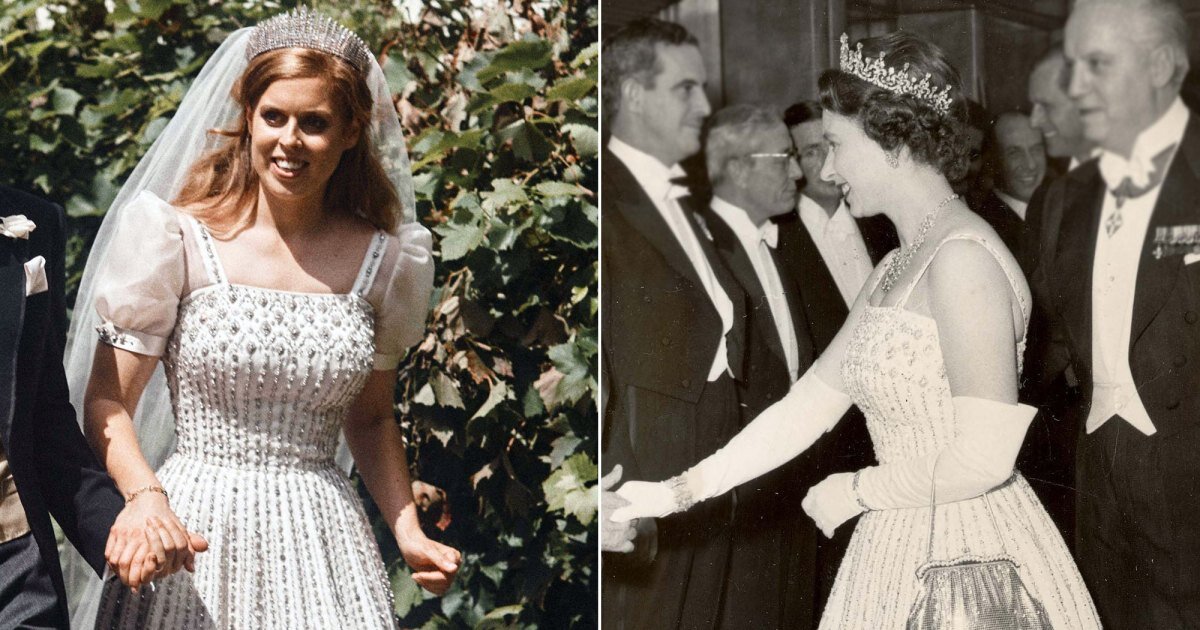Classic
Borrowed Vintage Dress & Tiara from the Queen
ClassicFor her wedding, Princess Beatrice wore a vintage Norman Hartnell dress on loan from her grandmother, Queen Elizabeth, according to a statement provided by Buckingham Palace on Saturday.
The dress, crafted from beau de soie taffeta with organza sleeves and trimmed with duchess satin, was refit for the bride.
“We’re all connected by the things we love.”
She topped off the look with the Queen Mary diamond fringe tiara — which Queen Elizabeth also wore on her own wedding day. Originally, the tiara was crafted in 1919 for Queen Mary by Garrard and Co. It was made from a diamond necklace gifted by Queen Victoria, according to the palace.
The groom donned a morning suit for the occasion.
Louis Vuitton’s dreamy new Escale collection
ClassicIn uncertain times, many of us dream of escape, perhaps to a far-away beach, where the sun shines and salt water laps softly against bare legs.
Such is the inspiration behind Louis Vuitton’s just-launched collection for spring, aptly named LV Escale, which translates to a stopover on a journey. The tie-dye printed goods (including ready-to-wear, accessories and swimwear) range from deep blue to warm pink colorways.
want the full story behind this year’s
Louis Vuitton Summer collection.
TRAVEL CASE
Louis Vuitton Escale Clémence Notebook
Riccardo Tisci Reveals New Burberry Logo and Monogram
ClassicMaking his first major move as creative director at Burberry, Riccardo Tisci has unveiled a new logo and monogram for the British heritage brand. The redesign comes ahead of Tisci's first runway show for Burberry this September during London Fashion Week.
The new creative director introduced a new look for the fashion house.
The new logo features a sleek and streamlined bold sans-serif text in all caps. Its new monogram, however, is an an interlocking 'TB' pattern—after the house's founder, Thomas Burberry—done in a red, honey-beige, and white color scheme. Both were designed in collaboration with Peter Saville, the graphic designer who also redesigned Calvin Klein's new logo under Raf Simons last year.
Limited Edition
Classic, Old School, TrendsNifty Fifties
Classic, TrendsThe 1950s was fundamentally a time of conformity. You won’t find anything wild or risqué at this time period. Think of it as good, clean, wholesome stuff. The mini skirts and wild fashions don’t arrive until the 1960s.
A female function was to entertain or attend social gatherings – all to promote and further their spouse’s career. Cocktail dresses – short versions of ball gowns – were essential. A woman was expected to wear a hat outside of the house (except for the most formal evening occasions) and gloves at all times – short for day, long for evening. Men tended almost to universally wear suits. The practice of dressing young people like their elders was still common, with the ‘mother/daughter’ look particularly in vogue.
1950s fashion was regulated by three C’s – code, conformity and consumerism. Women’s focus was on rearing children and keeping house as they had largely left the war years’ workplace. Both men’s and women’s activities centered around family and home and clothing changed as a result. Emphasis was on practical but attractive housedresses, not only for household chores but suitable for quick errands or the school run. Women dressed for ‘wifely’ roles!
Wardrobe rebuilding
ClassicSo you have made the decision to hop off the fast fashion train. You want to stop wasting your money on bargains and impulse buys and reserve your closet for high-quality garments that perfectly fit your style from now on. Great! But, what if your wardrobe needs a major overhaul and you can’t afford to buy all the clothes you need at once, especially if you want to avoid low-quality brands?

































